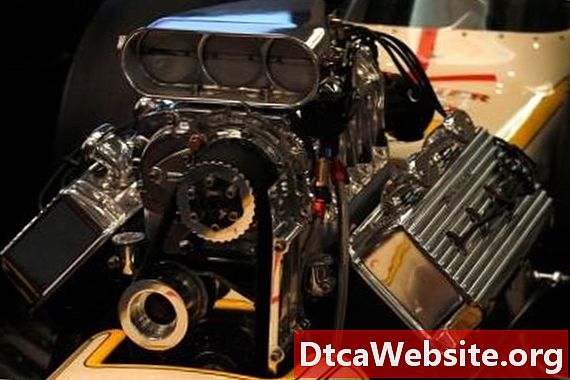
Contenu

When parked at a campground or home the electrical needs of a recreational vehicle, or RV, are usually supplied through a shore power cord. Larger RVs with more than one air conditioning unit and a luxurious standard of appointment, perhaps including washer/dryer facilities and multiple entertainment systems, need a 50 amp service. Typical RVs with a single air conditioning unit and more modest standards of provision need a 30 amp service. All RVs need an electrical hook-up box, sometimes called an outlet or receptacle, to plug into. The American National Standards Institute (ANSI) has designated a specific set of plug/outlet combination to satisfy this purpose.
Step 1
Decide what level of provision the electrical hook-up box must answer. Hook-up boxes are available with single 30-amp and single 50-amp outlets, and with multiple outlets, featuring a 50-amp outlet served by a 50-amp breaker, a 30-amp outlet served by a 30-amp breaker and a number of 20-amp outlets served by a 20-amp breakers.
Step 2
Buy a rainproof electrical hook-up box with a cut-out design, so that the cover can be closed with the shore power cord in place. Some designs of hook-up boxes are available rated as "industrial," which means they are built of heavy material and are equipped with heavy contacts. If such an uprating is available, purchase an "industrial" rated unit.
Step 3
Locate the electrical hook-up box in an area where it will be protected from direct rain and accidental contact, particularly from moving vehicles.
Step 4
Protect the electrical hook-up box with a master disconnect switch and an appropriately-rated circuit breaker installed between it and the power supply.
Step 5
Use 10-gauge three-core wire to supply 120 volts to the hook-up box for 30 amp provision. The color coding for the wires will typically be black to the hot terminal, white to the neutral terminal and green or bare to ground. Always consult the manufacturers literature and local codes to ensure your installation is correct.
Use 10-gauge four core wire to supply 220 volts to the hook-up box for 50 amp provision. The color coding for the wires will typically be red to a hot terminal, black to a hot terminal, white to the neutral terminal and green or bare to ground. Always consult manufacturers literature and local codes to ensure your installation is correct.
Tip
- Surge protectors will not function properly if the circuit into which they are plugged is not connected to ground.
Warning
- 50-amp service is for very large RVs, but their on-board equipment must be presumed to run on 120 volt electricity unless the manufacturers literature specifically advises otherwise. Never mistake a household 220-volt four-pin outlet, such as those serving cookers or clothes dryers, for a 120-volt four-pin 50-amp RV outlet. Forcing a 120-volt plug into a 220-volt socket would at best result in a dead short, and at worst in every appliance being burned out and a risk of fire.
Items you will need
- Electrical hook-up box
- Master disconnect switch
- Circuit breaker
- Wire
- Basic electrical tool kit


